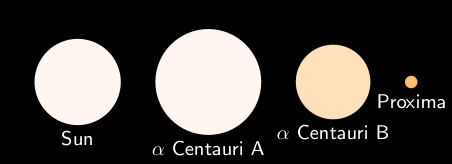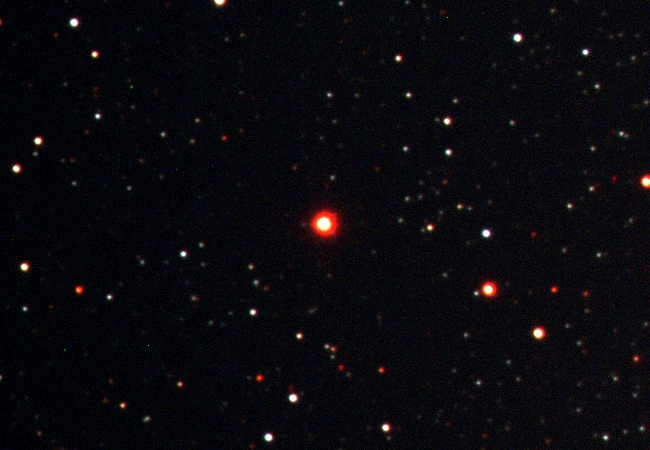We now resume our regularly scheduled series on interstellar outmigration, already in progress.
Based of the speed of space travel currently attainable and the length of a human lifetime, with or without currently available methods of suspended animation, there really is only one star system close enough to be reached by a mission crewed with humans. That system is Alpha Centauri. The very good news is, Alpha Centauri is not one star but three. The even better news is, each of those three stars are potential candidates for human-habitable worlds.
We'll consider each of these three stars in turn, beginning with the closest.
Proxima Centauri is the closest star to our sun, as far as we know. When the NASA WISE-mission data is all crunched we may find a brown dwarf star which is nearer, even within our sun's gravitational influence, but a brown dwarf is not much of a candidate for a habitable exoplanet.
Proxima, however, is an M5 class red dwarf. Any planet within the habitable zone of a red dwarf would be tidally locked with the star, meaning just like our moon, one side of the planet would always face the star while the other side always faced away from it. This is not a good scenario for habitability. However, if there happened to be a gas giant or ice giant planet within the habitable zone, a large moon of the planet might well prove habitable. This may prove true for other red dwarf stars, but Proxima has been proven to not have any planets larger than about two earth-masses in circular orbits in its habitable zone, so if there is a habitable moon there it must be around a planet not vastly larger than itself. However, if the planet were only slightly larger than its earth-sized moon, we might not have detected either of them yet. So this is still within the realm of possibility, at the moment.
Another issue for habitability around Proxima (or any red dwarf star) is that most of the starlight is emitted in the infrared spectrum. Terrestrial plants would need to be genetically engineered to optimize photosynthesis from the remaining visible spectrum light. This does not seem to me to be an insurmountable challenge, but genetic engineering is definitely not my field of expertise.
The third difficulty with many red dwarf stars, and Proxima in particular, is that many of them are flare-stars, meaning that they undergo very large periodic stellar flares, similar to solar flares of our own sun. This is problematical because of the physical proximity of the habitable zone to the star. But not necessarily a deal-breaker.
The verdict on Proxima Centauri? Not an especially great candidate for a planet or moon habitable by humans. But a good enough candidate for us to at least slow down and take a look on our way to the two bigger stars of Alpha Centauri.
More on them, beginning tomorrow.


No comments:
Post a Comment